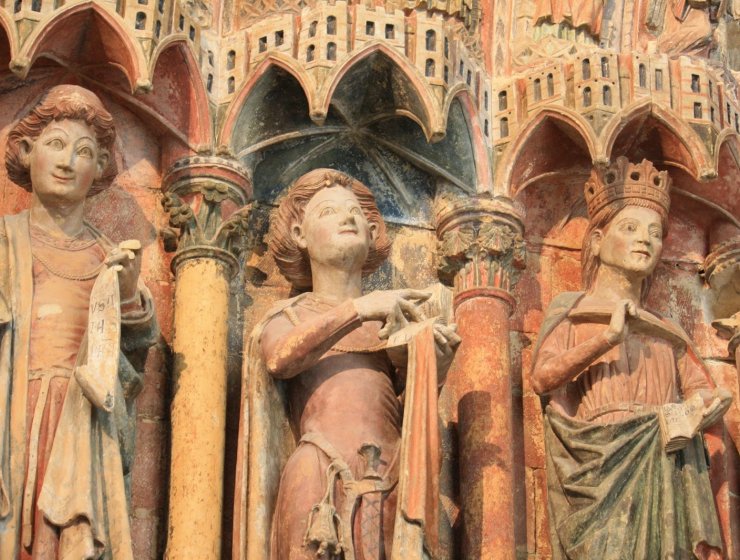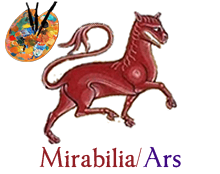
-Index-
Presentation
Presentation
José María SALVADOR GONZÁLEZ
Original title: Presentación
Special Issue
An approach to the iconography of the Book of Hours of Isabel the Catholic, Ms. II / Tesoro, Real Biblioteca: 4 Marian Images between the biblical text and apocryphal legends
Herbert GONZÁLEZ ZYMLA, Concepción del CASTILLO BLASCO
Original title: Una aproximación a la iconografía del Libro de Horas de Isabel la Católica, Ms. II/Tesoro, Real Biblioteca: 4 Imágenes marianas entre el texto bíblico y las leyendas apócrifas
Keywords: Apocripha, Book of Hours, Isabel the Catholic, Marian iconography, Medieval Art.
This article focuses on highlighting the role that, in the context of the spread of the devotio moderna during the late Middle Ages, acquired the precious Book of Hours of Queen Isabel the Catholic. To focus as much as possible the research topic, our paper analyzes –between the many miniatures illustrating this splendid illuminated codex– only four images referred to Mary: the Presentation of the Virgin to the Temple, the Annunciation, the Adoration of the Magi and the Coronation of the Virgin Mary. We complete our analysis by comparing these four images with the biblical and apocryphal texts that narrate these Marian events.
From Santiago Matamoros to Sen jak in the Haitian voodoo
Patricia GRAU-DIECKMANN
Original title: De Santiago Matamoros al Sen Jak del vudú haitiano
Keywords: Matamoros, Ogou Sen Jak, St. James Apostle.
Few Christian characters have shown the ubiquity and the capacity to become syncretised into other religions such as St. James the Apostle. He became known by different names and nicknames and is revered as far afield as Spain, Ghana, Peru and Haiti. This article will review some of the many facets that portray the first Christian Martyr.
Articles
Isidore of Pelusium and the use of the Holy Bible in his epistles
Eirini ARTEMI
Original title: Isidore of Pelusium and the use of the Holy Bible in his epistles
Keywords: Apostles, Christ, Isidore the Pelousiotes, New Testament, Old Testament, One God in Three Persons, Scriptures.
St. Isidore the Pelousiotes studied the Bible carefully. Through his letters, he interpreted various biblical passages and he explained different biblical themes. The word of the Bible was for the Father an infallible guide to overcome the pitfall of every heretical teaching, which threatened the salvation of believers in Christ. At the same time according to the inspired work of the Bible he could proclaim that there is One God in Three Persons. He emphasized the unity of God's essence and at the same time he talked about the hypostases of the one God. Isidore knew, of course, that the human mind cannot grasp the incomprehensible wisdom, that God's wisdom, since that God overlies the limits of the human mind. Finally with the help of hagiographical passages he could comprehensively cover the letters of issues other than doctrinal, moral, ascetic, educational and interpretive. In the Scriptures, he supported that the believer finds in Christ supplies to strive for social and moral progress, but mainly in order to conquer spiritual godly progression and perfection. The profound study of the Scriptures provides to the human being the ability to keep alive the flame of faith. It is a safe guide for the course of the life in Christ according to what the Triune God revealed in the Old Testament, the incarnated Word taught in the New Testament and the Apostles preached. Through Isidore's letters, it seems the respect which nourishes the holy father for Old and New Testament. For him, both testaments have the same worth as sources the Bible. They proclaim strongly and unambiguously the existence of one and at the same time Triune God. Simultaneously he ridiculed those heretics like Marcion who distorted the truth and became enemies to the Testaments.
The choir stalls of the St. Nicholas´ parish of Úbeda
Pablo Jesús LORITE CRUZ
Original title: La sillería del coro de la parroquia de San Nicolás de Bari de Úbeda
Keywords: Baroque, Choir stalls, Ghotic, Renaissance, St. Nicholas of Bari parish, Úbeda.
This little article talks about St. Nicholas of Bari medieval parish in the Úbeda town (South of Spain) and her choir stalls. We explain a photography that Georg Weise made before 1936.






















































































